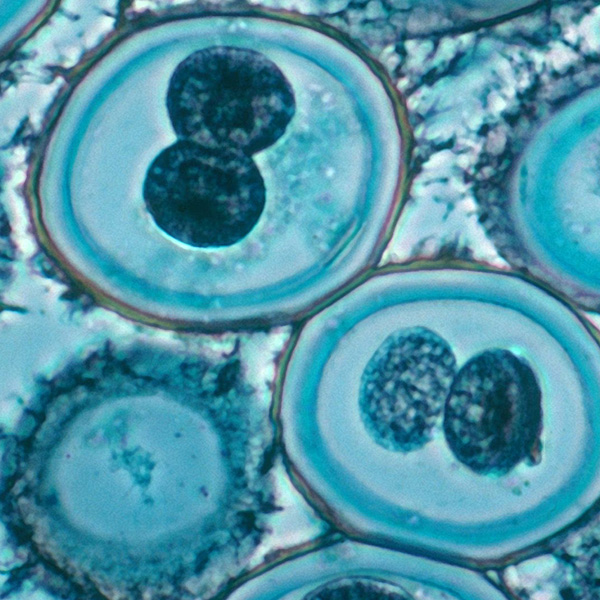Eukaryote << yoo KAR ee oht >> is a living thing whose cells contain a nucleus. The nucleus serves as a “control center,” directing activities within the cell. It contains most of the cell’s genetic (hereditary) information. Eukaryotes make up one of the three domains, or basic divisions, of life. The other two domains are archaea and bacteria. These life forms are single-celled and lack a nucleus. Eukaryotes include all animals, plants, fungi, and protists. Protists are tiny single-celled organisms (see Protist).

Most eukaryotic cells are much larger than the cells of archaea and bacteria. In addition to the nucleus, eukaryotic cells contain other organelles. Organelles are organlike structures within the cell with specialized functions. For example, nearly all eukaryotic cells have organelles called mitochondria. Mitochondria convert chemical energy from food into a form that the cell can use. Eukaryotes differ in the types of organelles they contain. For example, only plants and certain protists have chloroplasts. Chloroplasts convert light into energy the cell can use, through a process called photosynthesis.
Eukaryotes appeared most recently of the three domains of life, probably between 1.5 billion and 2 billion years ago. The evolution (gradual development) of eukaryotes was a major landmark in the history of life. It ultimately enabled the evolution of multicellular life (living things with more than one cell), including all animals and plants.
Eukaryotes and archaea are more closely related to each other than they are to bacteria. The origins of the nucleus remain a topic of study and debate. But some organelles, such as mitochondria and chloroplasts, are thought to have once been independent bacteria. These bacteria were taken up by ancestors of modern eukaryotic cells. They eventually lost their ability to live separately, evolving to become a permanent part of the eukaryotic cell.
